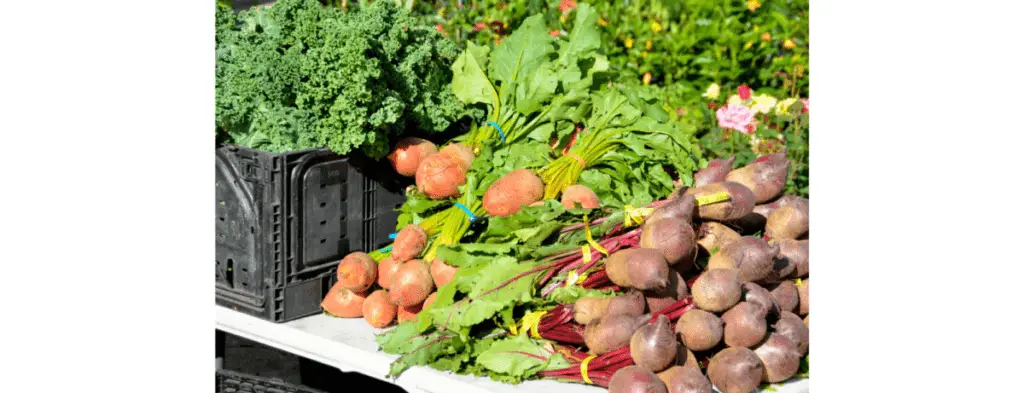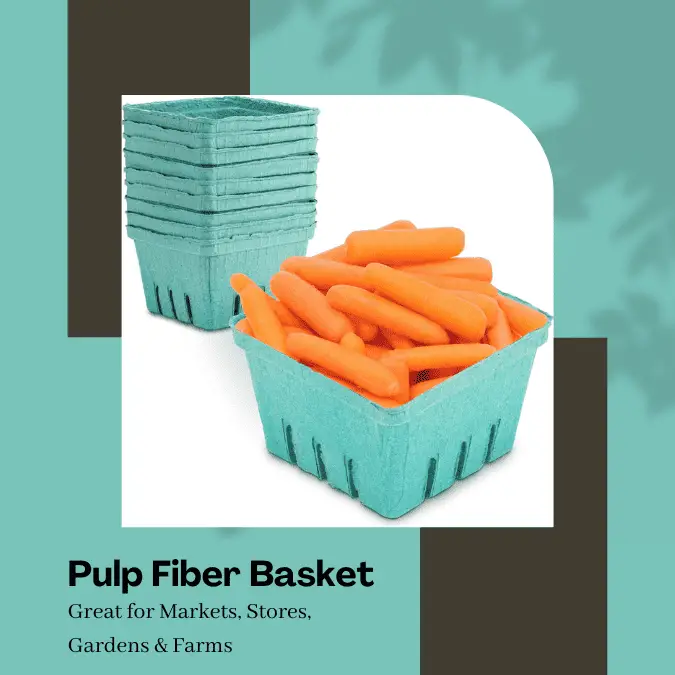
Some of us find gardening satisfying. It is also rewarding in different aspects. For instance, gardening brings us closer to nature, physically engages our bodies, and we get to grow fruits and vegetables to sell or for our own consumption.
If you are harvesting more than your family can consume (check out this post to find out how big of a garden you need to feed a family of four), you may have ideas about selling the extra garden produce. But can you sell vegetables from your garden?
Yes, you can sell your farm produce directly to consumers right from the garden. Some ways include:
- setting up a fruit and vegetable stand or fresh produce for sale sign at the front of your garden.
- You may also sell at the farmers’ markets.
- Alternatively, you can deliver your veggies to local retailers, restaurants, and consumers who make orders.
But before you start selling veggies from your garden, it is best to look into the local regulations to ensure you comply with the existing rules. Some areas require selling permits.
Is it legal to sell plants from home?
Yes, vegetable farmers can sell their organically grown produce from home without getting in trouble with the local authorities. However, the United States Department of Agriculture (USDA) may require a grower to get certified if they make over $5,000 in annual gross sales.
You may need USDA certification even if the sales value does not cross that minimum threshold. That applies to gardeners who intend to sell, label, or represent their farm produce as organic.
Some farmers use prohibitive fruit and vegetable growing methods. For example, they apply sewage sludge to their vegetable land. Unfortunately, this can potentially expose consumers to chemical contaminants and pathogens.
Being certified organic helps prevent growers from misleading their buyers who are after purely organic produce.
You will need a description of the practices, procedures, and products used in growing your vegetables for sale. Also, you will be under the supervision of a USDA certifying agent.
Suppose you had applied prohibited substances to land your land but want to comply with the organic farming regulations. You cannot get the organic certification until after three years of harvesting the crop.
What vegetables make the most money?
You do not need acres of land to start growing veggies and make profits. Some crops take up less space in your garden but have a higher market value.
Here are some of the profitable vegetables to consider:
1. Potatoes: According to the US Department of Agriculture’s (USDA) Economic Research Service, the share of potatoes in the vegetable market is about 15%. In ideal growing conditions, you can harvest 5 to 10 potatoes from one potato plant. On average, 1-2 pounds of seed potatoes yield approximately 10 pounds of potatoes. Learn more in our When to Harvest Potatoes post.
2. Tomatoes: When spacing tomato plants (paid link) at least two feet apart, you can grow five plants per 10 feet row and yield roughly 50 to 150 pounds of tomatoes but can reach up to 400 pounds. Check out our Growing Tomatoes post for all your tomato growing questions!
3. Onions: In a 10-ft row, you can have approximately 40 healthy plants with produce of up to 10lbs per square foot. We take a look at Common Garden Onion Questions here.
4. Green onions: Green onions (paid link) make a great addition to salads, soups, and other dishes. This type of onion is space friendly and provides a higher monetary value. You can grow about 60 to 80 plants in a 10 feet row. A medium-sized bunch weighs around 0.23lbs.
5. Carrots: Carrots (paid link) provide a medium to high market value. A 10-ft row can accommodate up to 120 carrot seeds, but you will later need to thin the plants to 2 inches apart. Generally, you can expect to get about 1 pound of carrots in a 1-ft row. Check out this post for a complete guide to growing carrots!
6. Lettuce: If you are planting in rows, a 10-ft row can hold 30 to 60 healthy lettuce plants. You can expect the plants to yield about 5 pounds of leaf lettuce. While lettuce is a medium producer, it has a relatively high monetary value. Lettuce can also be planted in the fall making it ideal for succession planting!
7. Cucumbers: Cucumbers are high-value vegetables to grow in your garden. One square foot of gardening calls for two cucumber plants. Most varieties yield about 10 cucumbers per plant. If you find your cucumber plants starting to struggle, check our our Fixing Common Cucumber Plant Problems post.
8. Broccoli: Broccoli (paid link) is another space-friendly and high-value vegetable. After harvesting the main head, your broccoli plant will keep producing several smaller side shoots. You can have 10 plants in a 10 feet row and get around 12 pounds of broccoli per square foot.
9. Cabbage: Even though cabbage is a relatively low-value vegetable, you will harvest a lot of produce from a small unit area. For example, 5-8 plants can go into a 10-ft row and yield 10-15 pounds per square foot. Another great benefit of cabbage is it can be grown in partial shade!
10. Celery: Celery (paid link) provides a medium return on investment. Since you need to space the plants 6 inches apart, a 10-ft row can accommodate up to 20 celery plants. For each square foot, expect about 15 pounds worth of produce.
Other valuable vegetables you want to plant in your garden include:
- Salad mix (paid link)
- Corn (paid link)
- Garlic
- Bell peppers
- Spinach
- Green beans
- Sweet potatoes
- Cauliflower (paid link)
- Asparagus
- Mushrooms
Many of these vegetables also make the list of easiest vegetables to grow! Learn more in this post.
Do you need a license to sell vegetables from home?
It depends on the state law, the channel you opt to sell your garden produce, and how much quantity you are selling. If you intend to sell directly at your farm, the city or county regulations do not require gardeners to have a license or permit.
Selling vegetables at the city or town roadside stands and markets usually requires a business license. The same may apply to growers selling veggies to local retailers and restaurants.
According to USDA, traders will need a Perishable Agricultural Commodities Act (PACA) license if their fruits and vegetable sales exceed $230,000 in a calendar year.
Fruit and vegetable growers do not need a PACA license, though. That is if you stick to selling produce from your garden.
We recommend you take your time to review the state rules and licensing requirements for selling garden produce from home.
This post contains affiliate links. If you make a purchase through these links, we may receive compensation at no additional cost to you.



